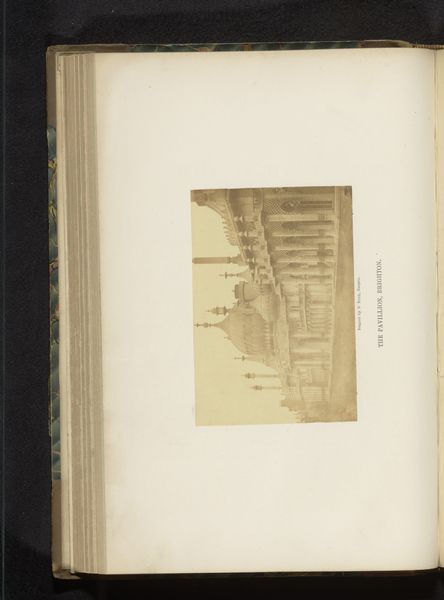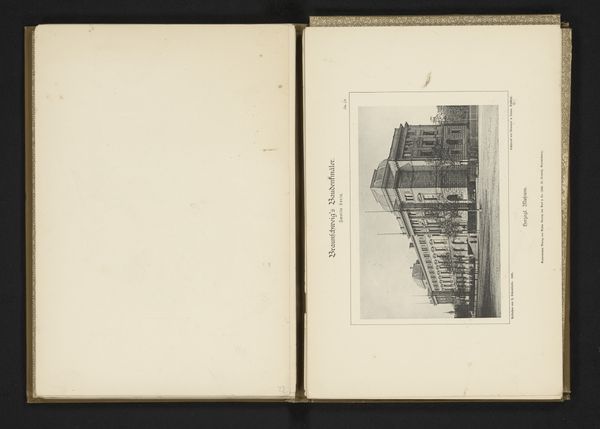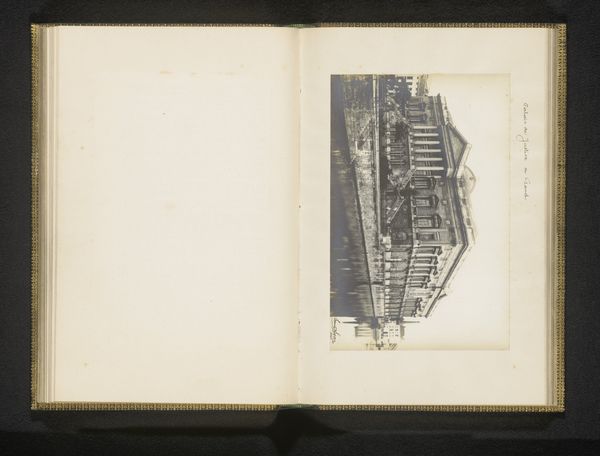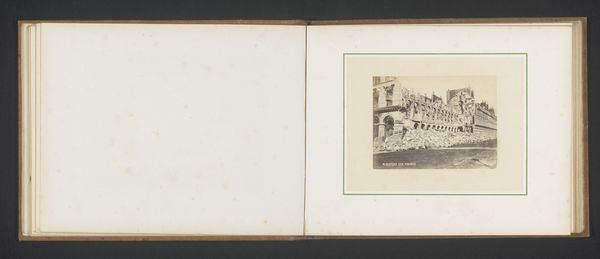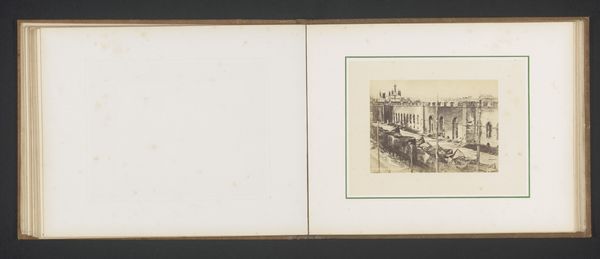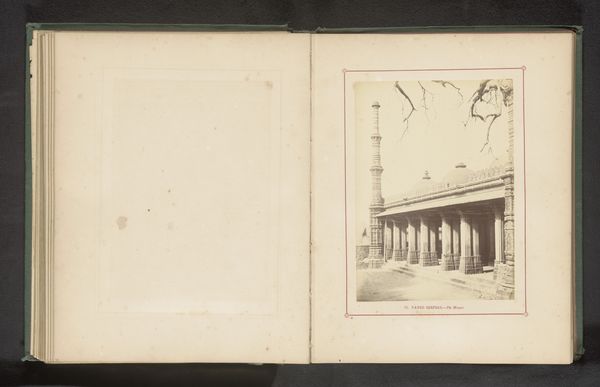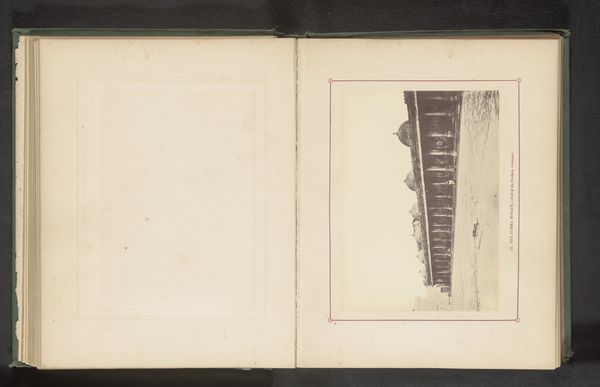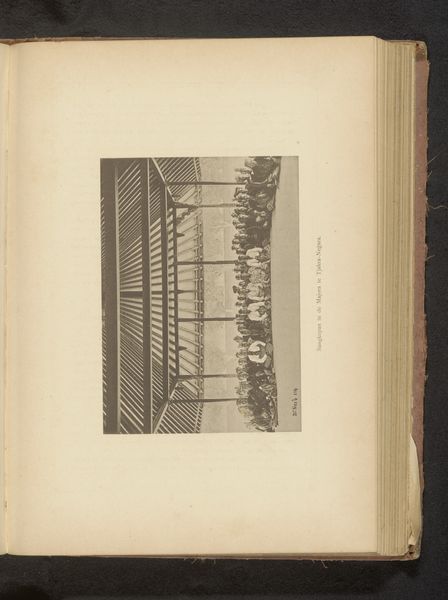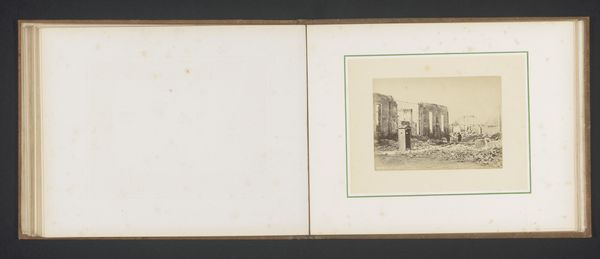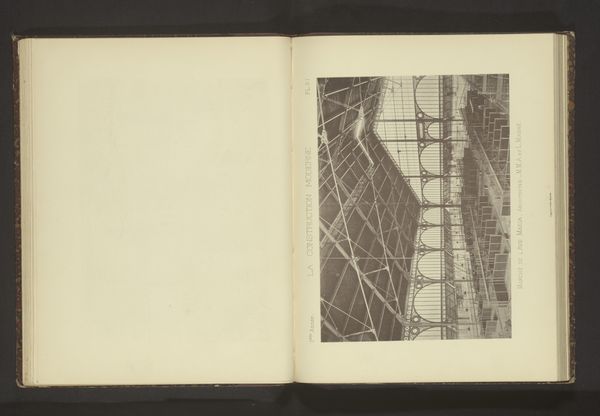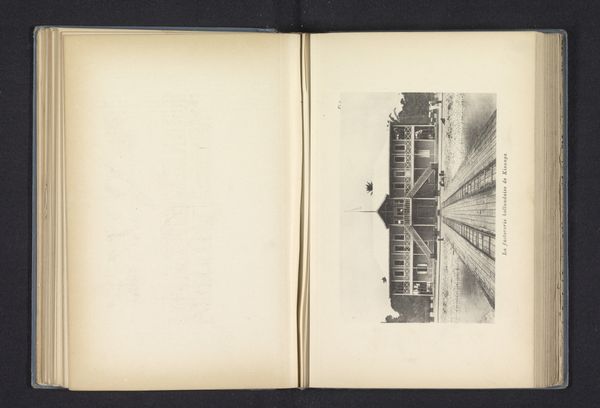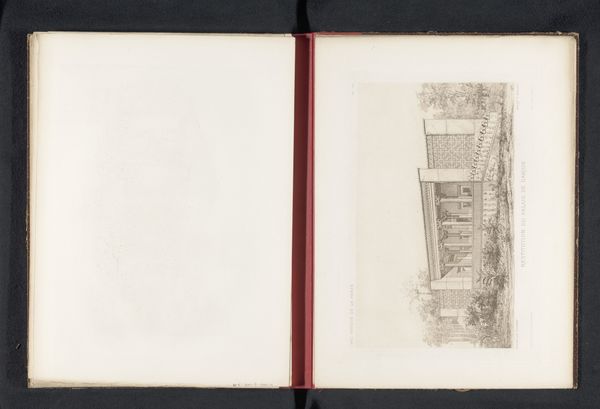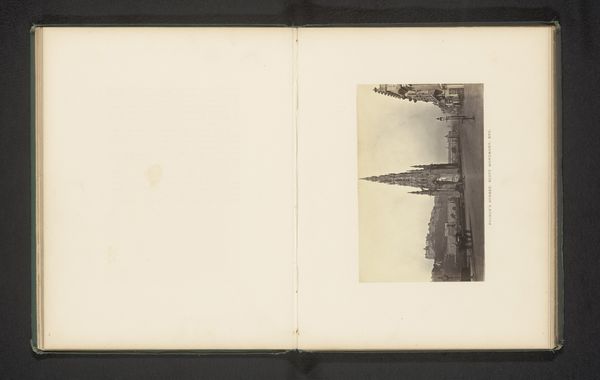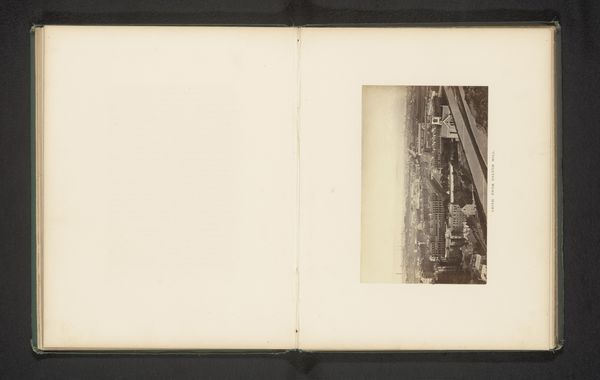
Twee vrouwen in traditionele Japanse kleding die elkaar begroeten bij een poort c. 1895 - 1905
0:00
0:00
photography
#
photography
Dimensions: height 105 mm, width 151 mm
Copyright: Rijks Museum: Open Domain
Curator: This photograph, entitled "Twee vrouwen in traditionele Japanse kleding die elkaar begroeten bij een poort," which translates to "Two Women in Traditional Japanese Clothing Greeting Each Other at a Gate", comes to us from the studio of Kōzaburō Tamamura, and dates from around 1895 to 1905. It's part of a larger visual movement embracing Japonisme. Editor: The delicate color palette creates such a peaceful ambiance. I find the formality of their greeting compelling and it really highlights the cultural nuances embedded in these kinds of social exchanges. It definitely leans into a romanticized view, though, doesn't it? Curator: Precisely. The composition reinforces that romantic view, echoing familiar motifs from Ukiyo-e prints. These photographs were frequently made for Western consumption and are an intriguing lens into orientalist desires. The very act of staging such scenes and then photographing them shaped Western perceptions. Editor: And considering Tamamura’s work within that framework is crucial. His commercial enterprise heavily depended on Western patronage, crafting these idealized visions. We should question the underlying dynamics—who benefits from this representation and whose story is being prioritized. I mean, these are posed scenes reflecting staged interactions, carefully crafted to align with Western tastes, really. Curator: Certainly. Yet they are also records. We see real textiles, architecture, glimpses into everyday life, even if presented through a subjective filter. There's a tension between cultural performance, commercial interest, and perhaps even an element of preservation of cultural practices that were changing rapidly. Editor: Absolutely. It pushes us to deconstruct assumptions and look closer. Are these women willing participants? Are they employees directed to play out certain scenarios? The framing highlights their positionality in a patriarchal and colonial gaze. The gate is not simply a point of entry; it’s a space between cultures, negotiation, and possibly exploitation. Curator: Acknowledging that nuance is so important. By looking at it from a lens of critical historical analysis, we reveal the complex exchange embedded in the imagery, beyond just "picturesque" Japan. Editor: Exactly. It demands a deeper examination of power, representation, and cultural translation and reminds us of the importance of acknowledging the often complicated circumstances surrounding visual archives like this one.
Comments
No comments
Be the first to comment and join the conversation on the ultimate creative platform.
